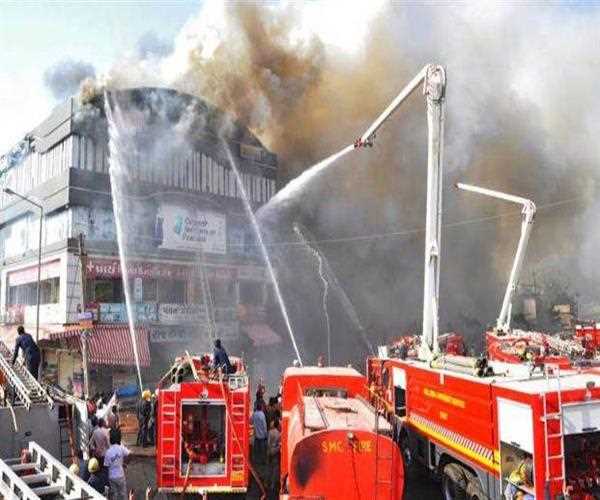Search here

28-Aug-2020
Rising Fire Damage Fear Level Thanks To Rising Residential Density
During the last few months, there have been horrific incidents of fire from different parts of the country. Whether it was a fire in Covid hospitals in Ahmedabad and Vijayawada a few days ago or a fire in the hydropower plant of Telangana, many people have lost their lives in it.
The number of people killed by fire in our country can also be gauged from the fact that according to the data of the National Crime Records Bureau, in 2015, over 17,700 people lost their lives due to fire across the country.
On the other hand, 2019 data from the Delhi Fire Department show that on average they get 85 and 31,157 calls annually to extinguish the fire. It has increased by about 10 thousand calls compared to the last decade ie 2009. In this context, the condition of other parts of the country can be understood by keeping Delhi a sample.
There are many factors that justify the disregard of fire safety norms in the country and reflecting the problem of increasing arson day by day and insensitive to urban areas of the country.
Human negligence coupled with short circuits and explosions in gas cylinders is the main direct cause. Indirect causes include illegal business activities in residential areas, violation of building and fire safety guidelines, inadequate number of modern equipment, vehicles, fire stations and infrastructure in the fire department.
Also, fire brigade response teams arrive at the scene on average 30 minutes instead of the expected five minutes, hiring fire crews with less money and life safety on contract, unplanned urbanization, and increasing skyscrapers and fire near the general public.
Lack of awareness including the non-availability of security resources is also a major reason. In this context, a report of the Ministry of Home Affairs states that there is a need for 8,600 fire stations, 5.6 lakh trained firepower employees, 2.2 lakh fire engine equipment and 9.3 thousand fire engines.
From time to time, a lot of laws, policy and guidelines are issued at the level of the central and state governments to prevent this disaster. But this disaster has not been managed better.
READ HERE MORE : The Boiling Dispute Of Mediterranean Sea
Fire prevention equipment is installed in commercial buildings in metros or all major cities, but no one has practical knowledge of operating these devices except for the few people deployed for this task.
Larger buildings have equipment such as special water pipelines so that a fire can be extinguished as soon as possible, but the general staff working there have no idea about it, while everyone working in that building Should be given general fire extinguishing training.
Many times it has also been observed that such type of equipment is installed in large buildings only to get the certificate of fire retardant equipment from the local body for commercial activities.
In such a situation, it can be better managed through a comprehensive and inclusive scheme of fire protection at the level of individual, social and nation. Everyone has to be aware of the measures to be taken to prevent this disaster.
The national digital fire database can play an important role in this matter, so it also needs to be prepared. National Digital Fire Database means the agency for compiling fire incidents in digital mode in different parts of the country.
This compilation process can be done through the bottom-up approach. As we know fire brigade department is under the state government, so to overcome this hurdle, a nodal agency should be created at the central government level, which is affiliated to the nodal agency of the state and districts.
These nodal agencies can be given within the special area of the National Disaster Management Authority, which has its reach from the national level to the district level. In this process, the nodal agency of the district will have to compile the data from the fire department falling under its jurisdiction.
In this process, all fire stations and units in the country will be involved, who will provide regular details of incidents in their area to the district nodal agency.
Thereafter, the Nodal Agency of the district will share the data collected with the State, the State Nodal Agency to the National Nodal Agency. Thus the premier nodal agency of the nation will submit a consolidated assessment of the data of all the states.
This process will create a comprehensive and realistic database of fire incidents in different parts of the country. On the basis of this, the risk of fire and its extreme sensitivity of different parts of the country can be evaluated. Through this, a new India with fire resistance can be built.

Content Writer/Journalist
I am a content writter !
Join Our Newsletter
Subscribe to our newsletter to receive emails about new views posts, releases and updates.
Copyright 2010 - 2025 MindStick Software Pvt. Ltd. All Rights Reserved Privacy Policy | Terms & Conditions | Cookie Policy